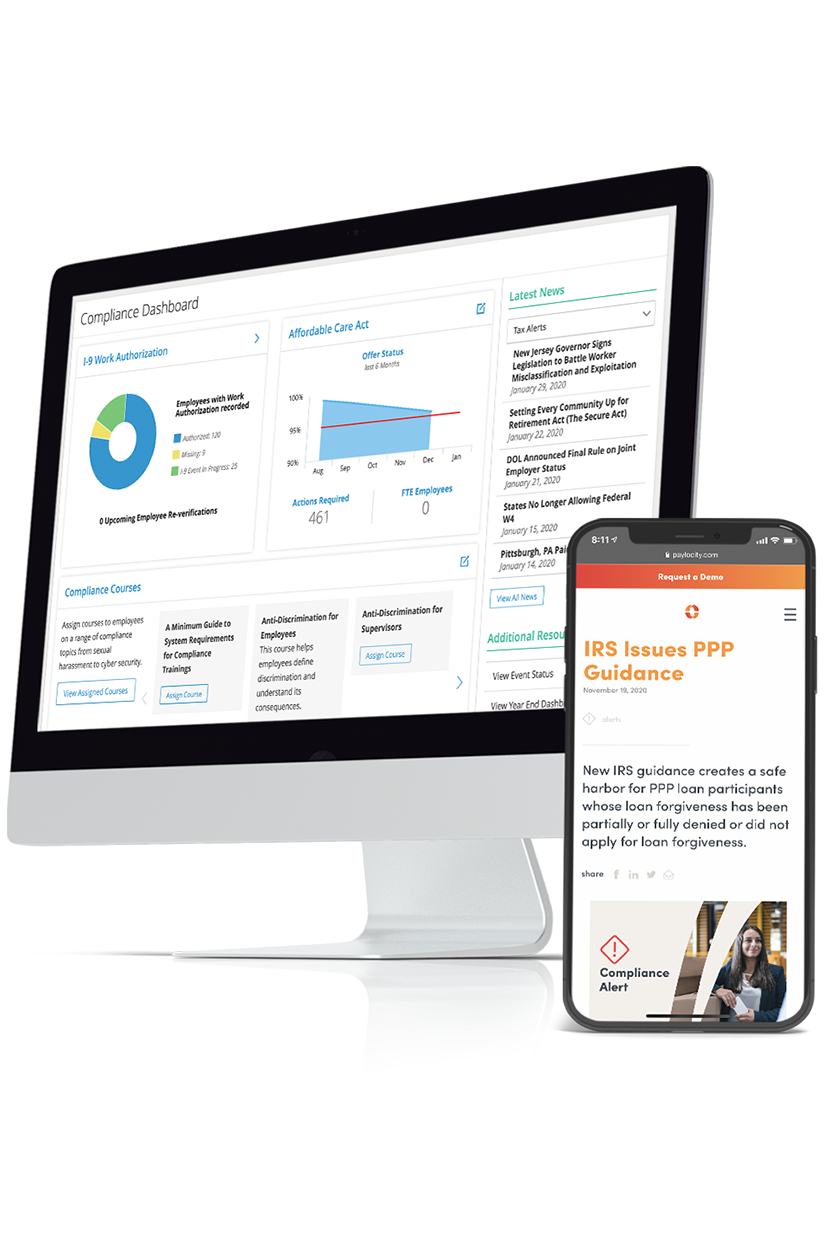resources
10 Critical To-Do's on Your HR Year-End Checklist
October 02, 2024

As the year winds down and holiday festivities kick into high gear, HR teams everywhere are juggling more than just seasonal parties and PTO requests.
The end of the year brings a whirlwind of tasks that, if left unchecked, can carry over into the next year with unwanted complications. From compliance requirements to employee benefits updates, a comprehensive year-end checklist is the secret to wrapping things up smoothly and setting your company up for success in the new year.
Let’s dive into what needs to be on your HR radar as 2024 comes to a close. Check out (or download) our top 10 to-do’s below.
1. Note important dates and deadlines, and prepare necessary forms
While many employees mark the end of the year by using up remaining PTO, it’s the busiest time of year for HR.
Prepare for a smoother season with these key dates:
- Your deadline for all 2024 adjustments is Friday, January 3, 2025. Remember to pay 2024 bonuses and third-party sick time before the deadline.
- Filing W-2s: Employers must provide Form W-2 to employees and the Social Security Administration by January 31, 2025.
- Affordable Care Act (ACA) reporting: Applicable Large Employers (ALEs) must file paper Forms 1094-C and 1095-C with the IRS by February 28, 2025 (or March 31, 2025, if filing electronically).
- FICA and FUTA forms: The IRS requires employers with Federal Unemployment Tax Act (FUTA) tax liability of more than $500 for the calendar year to deposit at least one quarterly payment. The due date for filing Form 940 is January 31, 2025, but if you deposited all FUTA taxes when they were due, you have until February 10, 2025, to file. If the due date for filing falls on a weekend or legal holiday, you can file the return on the next business day.
2. Validate employee personal and contact information
Whether an employee has moved, gotten married or divorced, or had a baby, their circumstances may differ from a year ago.
Ensure employees receive their W-2s by encouraging them to log in to the employee self-service portal and make necessary updates to their address, email address, and more.
Top things to review:
- Verify employee names and social security numbers are in the correct format.
- Confirm employee retirement plans are correctly listed on Box 13 of Form W-2s.
- Ensure any deceased employees’ status is Deceased.
- Confirm any deferred compensation plans are correct and verify employee contributions.
- Update and submit any Group Term Life Insurance claims.
- Verify withholdings are made properly.
3. Communicate paperless options
Keep employees in the loop and proactively communicate updates, such as when and how to access year-end documents.
If you’re a Paylocity user, send an announcement via Community and ensure your employees — even those without a company computer or email — receive necessary information and a consistent experience. Share the benefits of receiving W-2s electronically, such as instant and convenient ongoing access and less waste.
4. Review benefits and prepare for open enrollment
Have things changed over the past year? Open enrollment can be a great time to revisit plans and communicate any changes accordingly:
- Review coverage plans, pricing, and health insurance policies to determine if changes are needed.
- Prepare open enrollment communications and documents.
- Review Affordable Care Act (ACA) provisions, such as Employer Shared Responsibility, and IRS 2024 Employer Health Plan Affordability.
Learn More: ACA Compliance Guide for Employers
5. Review compliance requirements
Review Department of Labor (DOL) requirements and the Fair Labor Standards Act (FLSA) for any federal updates or alerts to help ensure your timekeeping practices are current and compliant.
6. Prepare final payroll
Process all bonus payments on a separate check, before January 3, 2025, to take full advantage of tax overrides, auto-payments, gross-to-net calculations, and more.
7. Check tax rates and wage bases
Review current tax rates and set any new wage base limits to take effect on January 1, including federal and state unemployment tax, Medicare, Social Security, and state employment taxes.
8. Distribute tax forms if not paperless
If you’re still using paper forms, ensure employees receive key tax documents by the following dates:
- January 31, 2025:
- Tax forms such as W-2s and 1099s must be distributed to employees if they haven't opted for paperless forms.
- Employers must file all Form W-2s to the IRS
9. Update employee handbook and policies
Have any paid time off policies changed due to updated or new legislation? What about compensation and benefits?
Review your employee handbook annually and update any guidance for the coming year. Post and share the updated version with employees using a social collaboration tool like Community, or make it a course in your learning management system (LMS) to track readership.
10. Evaluate and ask for feedback
After year-end activities conclude, send a survey to gather feedback on what worked and what didn’t.
For example, did your employees have the information they needed to enroll in benefits in time? Chat with stakeholders, senior leaders, and employees to gain 360 feedback, and adjust your plans accordingly for the following year.
Ring in the New Year with Paylocity
As a leading cloud-based HR and payroll provider, Paylocity is here to help your HR team tackle the year-end rush.
From benefits and payroll to talent and workforce management, we empower you to build a modern, engaged workplace. With our all-in-one platform and client-first service approach, we’re more than just a software provider — we’re your partner in success every step of the way, all year long.
Want to learn more? Request a demo today!

Keep Up With Compliance
Between constantly changing employment laws and updates to the Affordable Care Act (ACA), keeping your workplace compliant can be a time-consuming and costly challenge. Eliminate the stress and stay up to date with our Compliance Dashboard. View compliance alerts and get a bird’s eye view of what you need to do to avoid fines and penalties.



